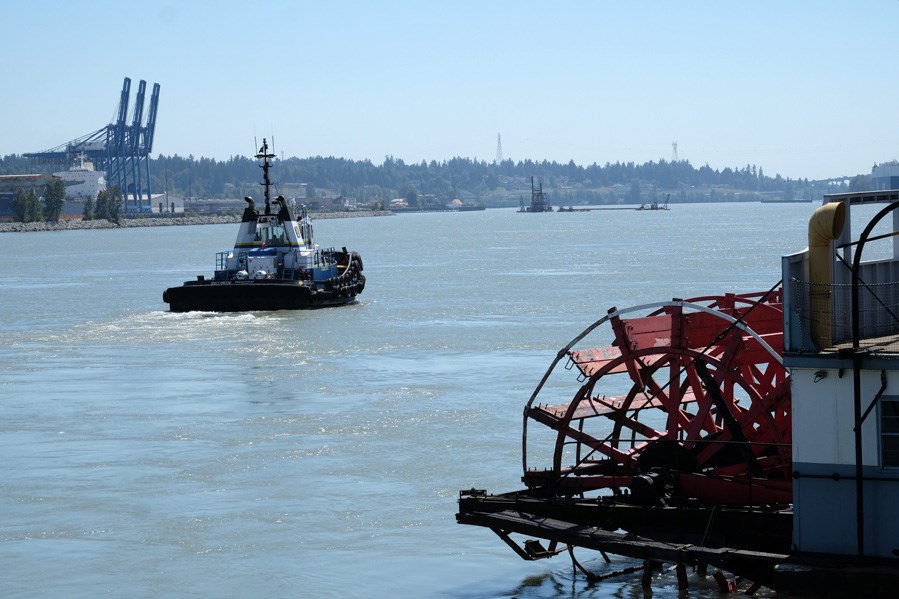The Council of Marine Carriers has “serious concerns” about building a pedestrian bridge over the north arm of the Fraser River.
Capt. Phill Nelson, president of the Council of Marine Carriers, has been corresponding with Quayside residents about the proposed Q2Q bridge, which would provide a pedestrian and cyclist link from the Quay to Queensborough.
“The tugboat industry uses the north arm the same as the trucking industry uses the Trans-Canada Highway – it is our main artery into the New Westminster area and points east,” he wrote in a letter to a Quayside resident. “At this time there are already too many obstructions, such as bridges, in the way and one more is a further obstacle that must be negotiated along the route.”
If a tug with a 10,000-ton gravel barge smacks a rail bridge, Nelson said it could result in a “catastrophic” event, demolishing the bridge, perhaps derailing a train and endangering the tug and train crews.
“If the same tug and barge were to hit a pedestrian bridge with a bunch of people walking across it, the outcome would doubtless be much more tragic,” he wrote. “And, who would be to blame? The tug captain who has been placed in that position by the bright spark who had the idea of a pedestrian bridge in the first place.”
Nelson said the Council of Marine Carriers has concerns about the “poor concept, weak design and inappropriate placement” of the proposed Q2Q bridge. Nelson, who gave residents permission to forward his email to the Record, couldn’t be reached for comment on the latest developments in the Q2Q project.
On Monday, council received a report on the review process, community consultation and next steps for the Q2Q bridge. Council also supported a motion to have the city contact the marine carriers and other agencies having jurisdiction over the river to express concerns about the stance being taken about the height of the bridge.
The City of New Westminster had proposed a stand-alone nine-metre high bridge last year. When that wasn’t supported by the marine carriers, it developed a concept for a 14.5-metre tall drawbridge downstream from the existing rail bridge.
“I think the vision of having this walkway is a great one,” said Coun. Mary Trentadue. “It’s very important for the city, for both sides. I think the challenge is that what we have ended up with is so different from what the original vision was. … I do support it, and I would like us to exhaust every possible option, idea and conversation that we can have.”
Coun. Patrick Johnstone said the marine carriers should have a say about how the river is used, but so should the people who live on the river and want to cross the river. “I think we as a council need to see how we can push back at the marine carriers and make it clear to them that there needs to be some compromise between their use of the river and our use of the river, to make this project easier for our city to accept,” he said.
Mayor Jonathan Cote said the city will pursue two streams to see if it can make the project workable: it will re-engage with the marine carriers and regulators to see if there’s any flexibility in terms of the bridge’s height; and it will consider whether other design elements can be considered to address challenges with the project, such as the impact on the local neighbourhoods, the budget and the usability for cyclists and pedestrians.
The city and its marine consultant previously held workshops with the Council of Marine Carriers, Transport Canada, Port Metro Vancouver and Southern Railway.



